The agreement establishes import restrictions on certain types of archaeological and ethnological materials originating from Pakistan and entering the United States. The agreement facilitates the return of these cultural articles to the people of Pakistan. The cultural property agreement spells out a strong commitment by the US and Pakistani to disrupting the theft and trafficking of cultural objects and our shared goal of protecting Pakistan’s rich and diverse cultural heritage
This agreement commits both parties to work together to counter looting and trafficking of objects, promote a clean market for Pakistani art and antiquities in the United States, and increase opportunities for US museums and the American public to learn about and experience Pakistan’s history and culture
American Ambassador to Pakistan Donald Blome and Pakistan Secretary of National Heritage and Culture Humaira Ahmed signed an agreement on cultural property protection in Islamabad recently. The agreement establishes import restrictions on certain types of archaeological and ethnological materials originating from Pakistan and entering the United States. The agreement facilitates the return of these cultural articles to the people of Pakistan. The cultural property agreement demonstrates a strong commitment by the US and Pakistani to disrupting the theft and trafficking of cultural objects and our shared goal of protecting Pakistan’s rich and diverse cultural heritage. This agreement commits both parties to work together to counter the looting and trafficking of objects, promote a clean market for Pakistani art and antiquities in the United States, and increase opportunities for US museums and the American public to learn about and experience Pakistan’s history and culture.
“This agreement protects unique and historically significant artifacts for future generations … It also demonstrates US support for the principles of tolerance and respect for diversity – principles by which the people of this region have lived for centuries,” said Ambassador Blome on the occasion of the MoU signing.
Today’s signing underscores the United States’ global commitment to cultural heritage protection and preservation. The United States has been unwavering in its commitment to protect and preserve cultural heritage around the world and restrict trafficking in cultural property, which may be used to fund terrorist and criminal networks. To date, the United States has returned over 175 cultural objects to Pakistan, and this agreement simplifies the process.
Since 2001, the United States government has supported 35 cultural heritage preservation projects across Pakistan with more than $8.4 million. The US-funded preservation projects include the conservation of Gandhara archaeological treasures and Mughal architectural heritage, documentation of historic manuscripts, the digitization of museums, and the restoration of historically significant Sufi shrines and Hindu monuments, among other projects. This new bilateral cultural agreement highlights the diversity of the Pakistani people and sets the stage for further bilateral cooperation.
There is so much to discover in Pakistan that it can be difficult to decide what to learn about first. From the diverse economy to the many wonderful languages, Pakistan has so much to offer to the rest of the world. Recently Pakistan has garnered a lot of attention for the scenic views and sky-touching in the northern part of the country mainly in Hunza, Kalash, Swat, and Murree.
There are over 70 languages spoken throughout Pakistan, 66 of which are indigenous to the region. The official national language of Pakistan is Urdu even though only about 7% of Pakistanis use Urdu as their first language.
English can be considered the second official language of Pakistan. Most, if not all, educational institutions offer a curriculum in English with Urdu taught only as a mandatory subject till high school.
Alongside Urdu, there are four main languages that each have more than 10 million speakers in Pakistan namely Punjabi, Sindhi, Pashto and Balochi.
The most common language in Pakistan is Punjabi which is spoken by nearly 48% of the country. The next most common language is Sindhi which is spoken by 12% of Pakistanis, followed by Pashto (8%) and Balochi (3%).
The extraordinary blend of cultures and people in Pakistan means that you can expect to hear all these languages spoken on any street in the bigger cities like Lahore, Karachi and Islamabad as well as the smaller ones such as Faisalabad, Multan, Mirpur, Gujranwala, Sialkot and more.
Other languages found in Pakistan include Gujari, Brahui, Kashmiri and Shina. Historically, Arabic, Bengali and Persian have also been spoken throughout the region.
Pakistan is known for its delicious and varied cuisine. From Halwapoori to Chaat to Nihari there is plenty to discover and enjoy.
Whether you are trying ‘Paya’ and ‘MurghCholay’ with Paratha from a stall on Gawalmandi Food Street, Lahore or digging into Beef Nihari under the stars at Burns Road, Karachi, Pakistani cuisine is a delight for your taste buds.
Even if you don’t live in Pakistan you must have come across some form of Pakistani cuisine wherever you live. Some cuisines that are favourites among the British, Europeans and Americans include Chicken Tikka, Biryani and Butter Chicken.
At the time of independence and the introduction of the Pakistani rupee, agriculture was the largest industry. Today, while agriculture is still significant, the economy is far more diverse and there has been a growth in skilled workers across industries as diverse as technology, finance, entertainment, manufacturing and banking.
While the ongoing global financial crisis has stunted the progress of many Pakistani businesses there is the potential for a strong economy to emerge and there will continue to be opportunities for skilled and highly-skilled workers.
In 2023, the average monthly salary of a person working in Pakistan is around 350 British Pounds, which, when converted to PKR makes PKR 81,800 depending on the ongoing GBP to PKR conversion rates.
This money will be able to go further in Pakistan than it would in the UK as the cost of living is considerably lower.
In general, the prospects for workers in Pakistan have steadily improved over the years and the emergence of new industries is promising for skilled workers looking to make a permanent move to cities like Karachi, Lahore, Islamabad or Faisalabad.



